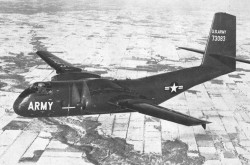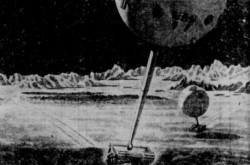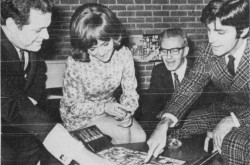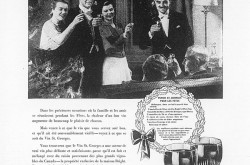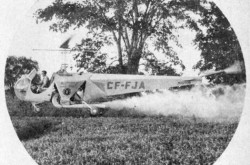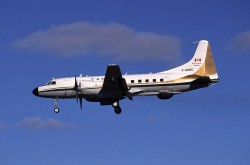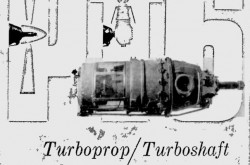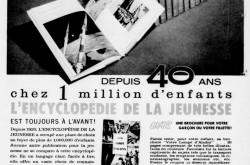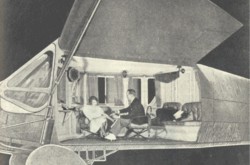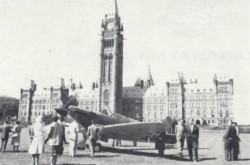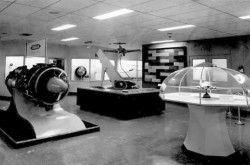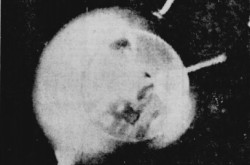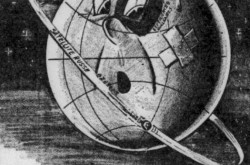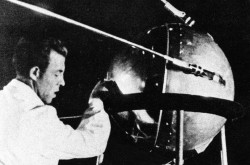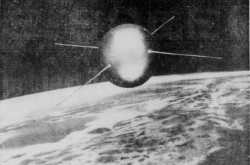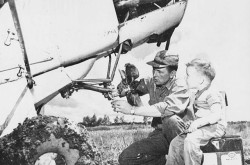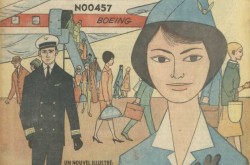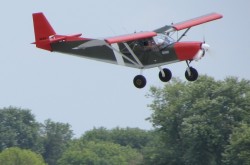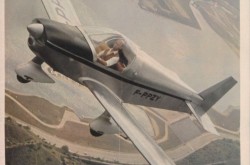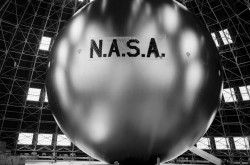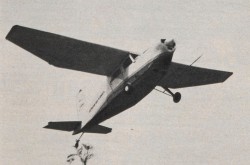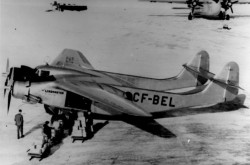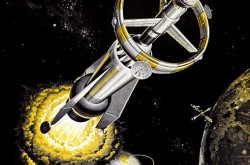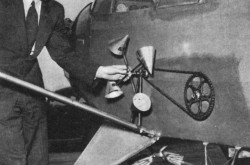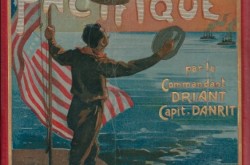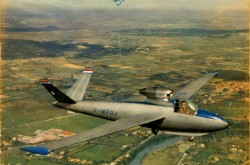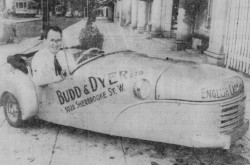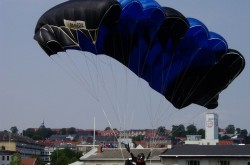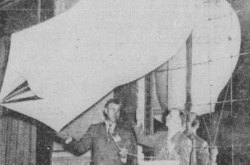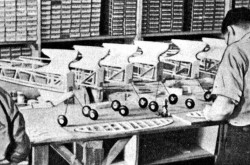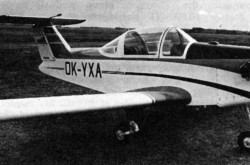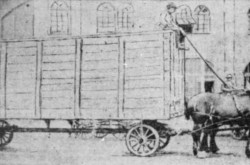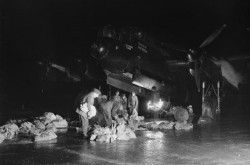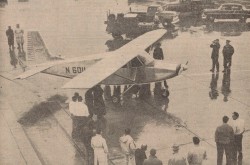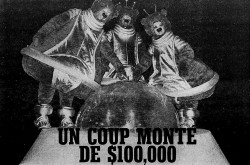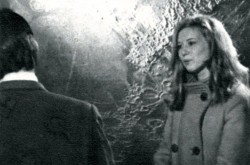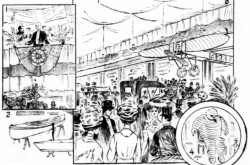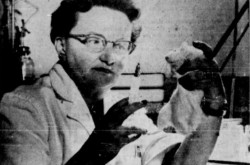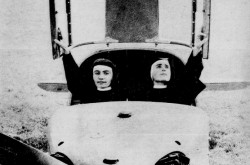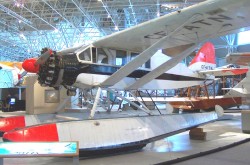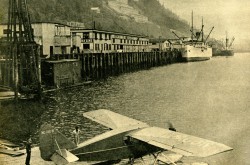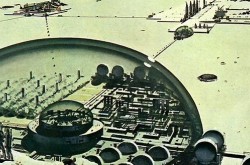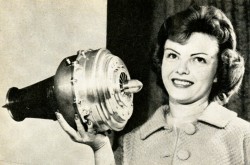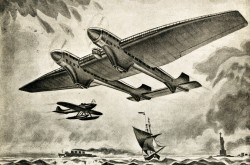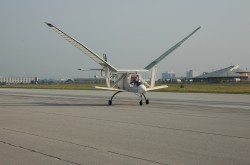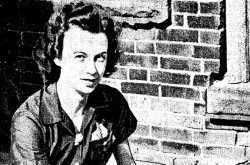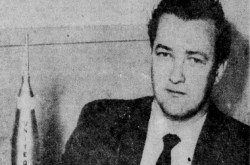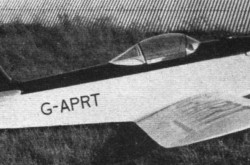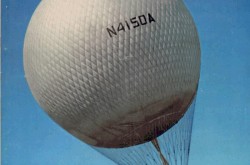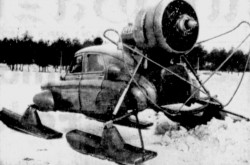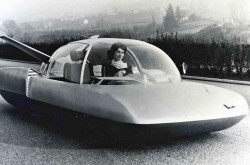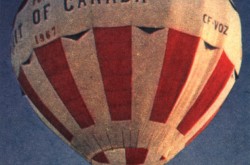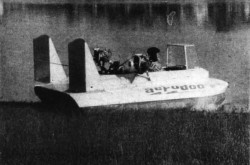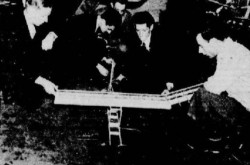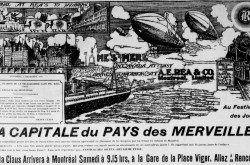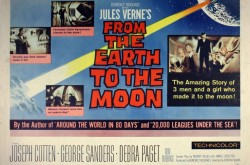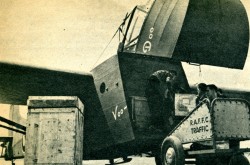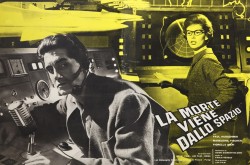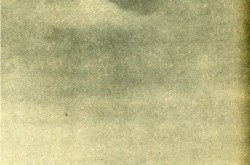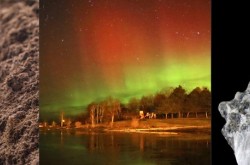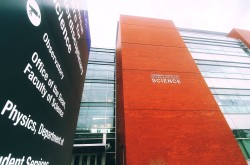“Did astronomers at the Dominion Observatory discover a new planet? Read all about it!” François Charles Pierre Henroteau, Miriam Seymour Burland and Planet ‘X’ – or was it Planet ‘Y’, part 2

Hello there, my punctual reading friend. Unlike yours truly, you are right on time to peer into the emptiness of space, the final frontier, and look at the discovery of a trans-Neptunian planet by Canadian astronomers in April 1930.
The reason for my delay? Informatics problems, and for once, they were not mine. Ah, computers, how I hate them? Let me count the ways, but back to our story.
The March 1930 announcement mentioned in the 1st part of this article, yes, that of a trans-Neptunian planet which would soon become known as Pluto, led to a search in the collection of photographic plates of the Dominion Observatory, in Ottawa, Ontario.
More precisely, it led to a search for Planet ‘X’ upon photographic plates dating from 1920 to 1924. At least some staff members seemed to think that the new planet, yes, again, the trans-Neptunian planet which would soon become known as Pluto, would be visible in at least a few places. Up to 500 or so photographic plates might have been examined. Small photographic plates, a fact which did not help the search of what would undoubtedly have been a very faint celestial body.
The result of that search turned out to be very interesting indeed. Let us investigate, shall we?
Yours truly has uncovered articles published by no less than 22 Canadian daily newspapers located in at least 5 provinces on 23 April 1930. And here is a list of those provinces, with the cities where the newspapers in question were published:
- Alberta (Calgary, 1 daily; Edmonton, 1 daily)
- British Columbia (Vancouver, 2 dailies; Victoria, 1 daily)
- Ontario (Brantford, 1 daily; Hamilton, 1 daily; Kingston, 1 daily; Kitchener, 1 daily; North Bay, 1 daily; Ottawa, 3 dailies, including a francophone one; Owen Sound, 1 daily; Sault Ste. Marie, 1 daily; Toronto, 1 daily)
- Québec (Montréal, 2 dailies, including a francophone one; Québec, 1 francophone daily; Sherbrooke, 2 dailies, including a francophone one), and
- Saskatchewan (Saskatoon, 1 daily).
And here is a front page of one of the newspapers in question…

A front page with a prominent headline announcing the observation of the trans-Neptunian planet which would soon become known as Pluto by Canadian astronomers based in Ottawa, Ontario. Anon., “Ottawa Observers Photographed New Planet X.” The Ottawa Evening Citizen, 23 April 1930, 1.
Pretty cool, eh?
Depending on which of those publications a person read, she or he would have concluded that Canadian astronomers had, perhaps or in fact, unknowingly discovered Pluto or a brand new trans-Neptunian planet. Wah!
Yes, yes, my reading friend, you read it right. Canadian astronomers might have discovered a brand new planet.
And yes, a far greater number of American newspapers covered that same story on 23 April.
You knew that Neptune was the planet known to be the furthest from the Sun before the discovery of Pluto, hence the expression trans-Neptunian used to identify a planet located furthers still from the Sun, now did you not, my reading friend? Sigh… What did people learn in school these past decades? Anyway, let us move on.
And yes, my shocked reading friend who likes to jump from one subject to another, there are indeed people today who believe that the Earth is flat. If the results of a 2021 survey were to be believed, about 10% of adult Americans (seriously?) held such beliefs. Another recent survey, made in Canada this time, revealed that about 5% of adult Canadians (seriously?) held similar beliefs. The mind boggles, but back to our story before my little noggin explodes.
You may wish to note, my eagle-eyed reading friend, that The Toronto Daily Star of… Toronto, Ontario, an important Canadian newspaper if there was one, published its text on page 32 and that this text was really quite tiny. Mind you, the articles published by several other Canadian newspapers were not exactly ginormous either. Those published in a significant if faraway city like Vancouver, British Columbia, for example.
The absence of so much as a semicolon, em dash or comma (Hello, EP!) on the potential discovery of a planet by Canadian astronomers in 23 April issues of daily newspapers as important as La Presse of Montréal or The Gazette, also of Montréal, was even more puzzling.
Yours truly wonders if the time, early in the morning perhaps, at which those newspapers reached newsstands might explain the lack of articles, but I digress. Again.
As you might have guessed by now, the search in the collection of photographic plates of the Dominion Observatory was not in vain.
By the way, that search was conducted by a Belgian (Canadian?) astronomer and head of the physical astronomy department at said observatory, François Charles Pierre Henroteau, as well as a Québec / Canadian astronomer, Miriam Seymour Burland, the 1st woman on staff at the Dominion Observatory.
Actually, Henroteau and Burland calculated where the celestial body should be. The two of them then went looking for it in the photographic plate collection of the observatory.
Burland was born in Saint-Lambert, Québec, in early September 1902. After graduating from Longueuil and Montreal South High School, in… Longueuil, Québec, she studied mathematics and physics at McGill University, in Montréal, an institution of high learning mentioned on moult occasions in our blog / bulletin / thingee, and this since December 2018. Burland graduated in the Spring of 1926.
Sometime before or after that date, Burland developed an interest in astrophysics through a Québec / Canadian astronomer / astrophysicist and lecturer at McGill University, Alice Vibert “Allie” Douglas, born Alice Douglas Vibert. In any event, she, yes, Burland, joined the Astrophysics Division of the Dominion Observatory in 1927.
Incidentally, Douglas was the 1st member of the species Homo sapiens to receive a doctorate in astrophysics from a Québec university, as well as one of the first women to accomplish this feat in North America.
A brief digression if I may. You do remember that Arthur Stanley Eddington was mentioned in the 1st part of this article, now do you not, my reading friend? Yes? Good.
Now, would you believe that Douglas published a superb biography of that English astronomer / mathematician / philosopher of science / physicist / populariser of science? The Life of Arthur Stanley Eddington came out in October 1956.
And yes, you are indubitably correct, my reading friend. Burland was indeed mentioned in a February 2021 issue of our awesome blog / bulletin / thingee, in an article which was not written by yours truly.
Incidentally, it has been suggested that Burland was the 1st woman employed by Canada’s federal government to be allowed to wear pants on the job, a skirt not providing enough warmth and protection in an observatory, a building with a large opening which could be friggin’ cold in winter. I kid you not.
She apparently needed some sort of ministerial waiver to wear said pants. A waiver. The mind boggles. Canada was indeed a stuffy, stodgy, provincial, parochial, insular and hidebound backwater in the 1920s and 1930s, but I digress.
Henroteau, on the other hand, was born in Liège / Lièche / Lîdje / Luik / Liege, Belgium, and this toward the end of February 1889.
Yours truly will devote a sizeable amount of space on Henroteau, if only because he has been pretty much forgotten, unlike Burland who has her own Wikipedia page, available in Spanish, Euskara / Basque, English and Arabic. I kid you not.
Oddly enough, Henroteau seemingly came into this world precisely 20 years before the 1st controlled and sustained flight of a powered aeroplane on Canadian soil, a flight made by a young Canadian engineer, John Alexander Douglas McCurdy, aboard an aeroplane of his own design, the Aerodrome No. 4 Silver Dart.
That American-made aeroplane was the most successful machine developed by the Aerial Experiment Association (AEA), an American and Canadian group founded in Canada in 1907 by the Scottish American, yes, yes, American, inventor / teacher Alexander Graham “Alec” Bell.
And yes, my reading friend, you are quite right in thinking that Bell, McCurdy and the AEA are known to us. They were mentioned in many previous issues of our amaaazing blog / bulletin / thingee:
- McCurdy, since September 2017,
- Bell, since October 2018, and
- the AEA, also since October 2018,
but back to our story.
Soon after earning his doctorate in mathematics and physical sciences from the Université libre de Bruxelles, in… Bruxelles / Brussel / Brussele / Brussels, Belgium, in 1911, Henroteau carried out an internship at the Observatoire royal de Belgique, located in Uccle / Ukkel,… Belgium, near Brussels. He then taught mathematics in Belgium.
Henroteau fled his home and native land in August 1914, pretty much when Brussels fell to the troops of the Deutsches Heer which overran and occupied virtually all of Belgium at that time.
Henroteau initially went to England. At some point in late 1914, for example, he began to work at the Stonyhurst Observatory, an astronomical observatory / weather station located on the site of Stonyhurst College, a roman catholic private school located near the village of Hurst Green, England. While there, Henroteau worked for / with a prominent member of the British astronomical community, a English jesuit amateur astronomer / music director / teacher by the name of Aloysius Laurence Cortie.
In February 1916, however, Henroteau was appointed visiting assistant astronomer at the Detroit Observatory of the University of Michigan, in Ann Arbor,… Michigan. He seemingly arrived in the United States in March.
What was supposed to be a one-year appointment in one university turned into a stay at 3 universities which lasted until after the end of the First World War, a dreadful and, dare one state, utterly unnecessary conflict.
In 1917-18, for example, Henroteau could be found at the Lick Observatory of the University of California, an astronomical observatory located near San Jose,… California. At some later point in 1918, he became an assistant astronomer at the Alleghany Observatory of the University of Pittsburgh, in… Pittsburgh, Pennsylvania. Henroteau remained there until 1919.
Henroteau used the opportunity offered to him to visit several if not many American observatories where he learned a great deal about astrophysics. All in all, he did very well for himself during the First World War.
Henroteau joined the staff of the Dominion Observatory in the early Autumn of 1919, as an assistant astronomer. He soon began to take hundreds, if not thousands of photographs of the heavens, using the observatory’s refracting telescope, but back to our story.
And you have a question… What exactly is a refracting telescope? A valid question and one well worth asking. A refracting telescope, or refractor, is a type of optical telescope which uses a lens to form the image observed by astronomers.
A reflecting telescope, or reflector, on the other hand, is a type of optical telescope which uses a one or more mirrors to form that image, but back to our story. Again. Good question, though.
By the way, did you know that the refracting telescope of the Dominion Observatory can be found in the collection of the Canada Science and Technology Museum, in Ottawa, a sister / brother museal institution of the world class Canada Aviation and Space Museum, also located in Ottawa?

Two of the February 1924 photographs of the collection of photographic plates of the Dominion Observatory, in Ottawa, Ontario, located by François Charles Pierre Henroteau and Miriam Seymour Burland which allegedly showed the trans-Neptunian planet which would soon become known as Pluto. That planet, visible in the image on the left, taken on 7 February 1924, was indicated by the arrow. The cross in the image on the right, taken on 29 February, on the other hand, showed that this same planet was no longer in the position it had occupied 22 days before, a position indicated by an arrow. Anon., “La découverte de la planète transneptunienne est prévue et attendue depuis longtemps, et le seul véritable intérêt de son étude sera la vérification de certaines lois astronomiques.” Sciences et Voyages, 19 June 1930, 14.
To repeat what has been said (typed?) above, the search in the Dominion Observatory’s collection of photographic plates was not in vain. Indeed, Henroteau and Burland found a trio of photographic plates dating from February 1924 on which they could see a planetary body whose position and distance to the Sun seemed to match those of the trans-Neptunian planet which would soon become known as Pluto.
Actually, Henroteau spotted that planetary body on a photographic plate dating from 29 February 1924. Burland then spotted it on a photographic plate dating from 7 February. Both images might have been captured by Henroteau himself.
A renowned Canadian astronomer, the director the Dominion Observatory in fact, Robert Meldrum Stewart, quickly sent a message to that effect, presumably a telegram, to Harlow Shapley, a renowned American astronomer and director of a distribution centre for astronomical information, namely the Harvard College Observatory of… Harvard University, in Cambridge, Massachusetts.
Stewart might, I repeat might, have thought that the plates examined by Henroteau and Burland were the earliest on which one could see the trans-Neptunian planet which would soon become known as Pluto, which was far from the case, as you and I learned several days ago.
This being said (typed?), by then, Henroteau and Burland had begun to look at photographic plates dating all the way back to 1906. This arduous work was not done merely for the sake of completeness. Nay. The more often the trans-Neptunian planet could be seen on photographic plates, the more information astronomers would have to calculate the orbit of that celestial body.
Before I forget, Stewart was mentioned in August 2022, September 2022 and January 2025 issues of our monumental blog / bulletin / thingee. Would you believe that he can be found in no less than three September 2022 issues of that publication? I kid you not, but I do digress.
In any event, Shapley seemingly disagreed with the suggestion that Stewart was passing along. You see, he sent out a despatch stating that the information contained in the latter’s telegram as well as in a Canadian dispatch had led him to the conclusion that the object visible on the February 1924 photographic plates of the Dominion Observatory was not the trans-Neptunian planet which would soon become known as Pluto.
According to Shapley, what Henroteau and Burland had discovered was either a celestial body previously unknown to science, a 10th planet in fact, or the nucleus of a comet located at the furthest point of its orbit around the Sun.
His conclusion was in part based on orbital calculations made by staff members of at least 3 observatories, namely the Students’ Observatory of the University of California, in Berkeley,… California; the Lowell Observatory, in Flagstaff, Arizona; and the observatory of the Uniwersytet Jagielloński, in Kraków / Krakow, Poland. (Cześć, AA!)
Shapley added that staff members of the Harvard College Observatory were examining the collection of photographic plates of that institution to see if the object spotted by Henroteau and Burland could be spotted therein.
Another American astronomer contacted by journalists, Frank Schlesinger, director of the Yale University Observatory of… Yale University, in New Haven, Connecticut, did not want to submit an in depth comment on Stewart’s telegram, of which he had received a copy.
This being said (typed?), Schlesinger did not think that the celestial body discovered by an American amateur astronomer by the name of Clyde William Tombaugh was the planet which was perturbing the orbit of Uranus. There were a number of objects which might explain those perturbations, however, and the one seemingly discovered by Henroteau and Burland might be one of them.
Schlesinger thought that those objects might be very far away counterparts of the more than 2 000 asteroids located between Mars and Jupiter which endlessly circled around the Sun.
Incidentally, 2025 astronomers are of the opinion that there are between 700 000 and 1 700 000 asteroids equal or larger than 1 or so kilometre (0.62 or so mile) across endlessly circled around the Sun. Wah!
Are asteroids dangerous, you ask, my worried reading friend? Well, on 30 June 1908, an object which was not an extraterrestrial starship made its way through the protective atmosphere of our planet and exploded in mid air, leaving no discernable impact crater. The blast flattened / knocked over gazillions of trees over a sparsely inhabited 2 150 or so square kilometres (830 or so square miles) area of Eastern Siberia, in the Russian Empire. An unknown number of people died in what is commonly referred to as the Tunguska event / incident.
The diameter of that object? A puny 50 to 100 or so metres (165 to 330 or so feet)…
By the way, the total areas of the cities of Montréal, Québec, and Toronto, Ontario, are 500 or so square kilometres (190 or so square miles) and 630 or so square kilometres (245 or so square miles), but back to our story, but only next week. Oh yes, and… pleasant dreams…
And yes, the dinosaurs probably felt pretty safe too, 66 or so million years ago.





































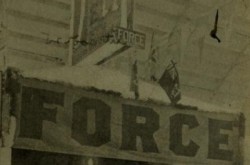
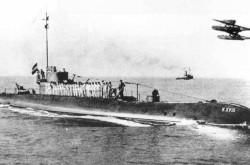
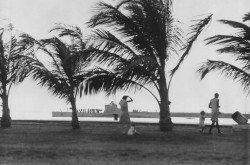
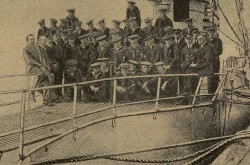
![A block of photographs showing some of the people involved in the bombing of beluga whales in the estuary and gulf of the St. Lawrence River. Anon., “La chasse aux marsouins [sic]. » Le Devoir, 15 August 1929, 6.](/sites/default/files/styles/thumbnail_7/public/2024-09/Le%20Devoir%2015%20aout%201929%20page%206.jpg?h=584f1d27&itok=TppdLItg)

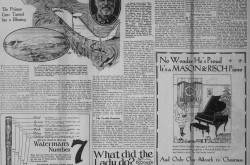

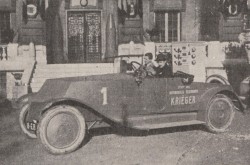
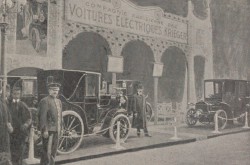

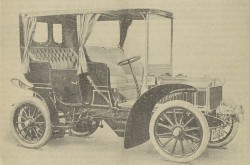

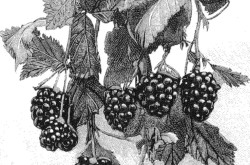
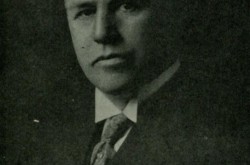
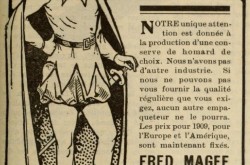
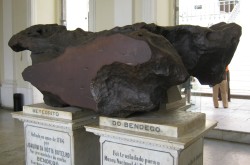
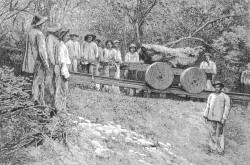
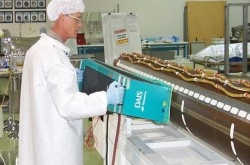
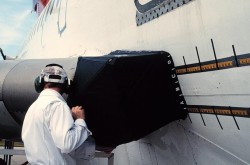
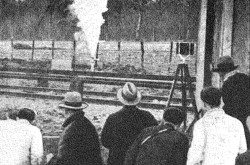
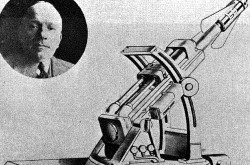
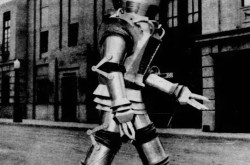

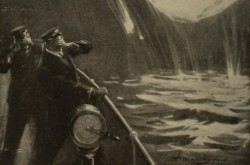
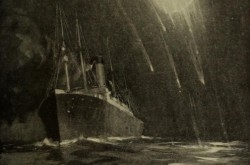
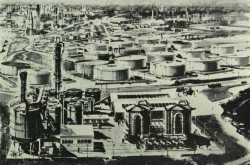
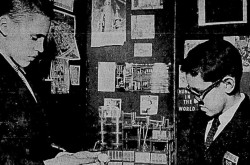
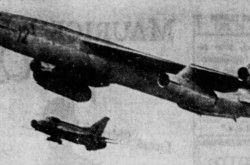
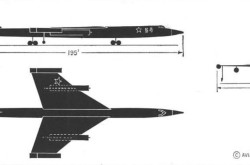
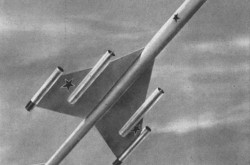

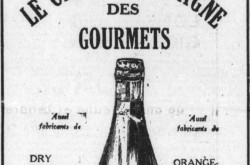
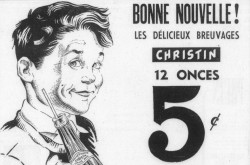

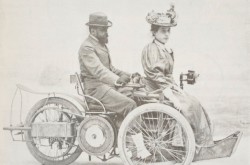
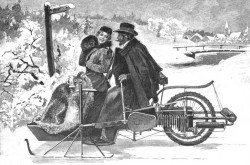

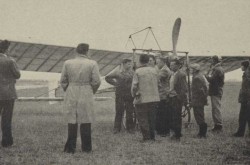
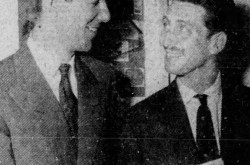
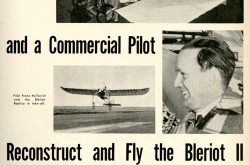
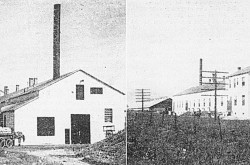

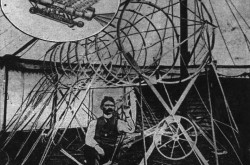

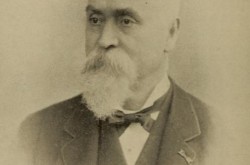
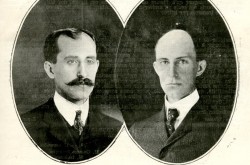
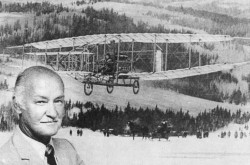
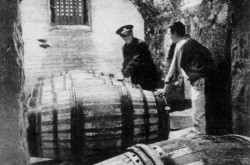
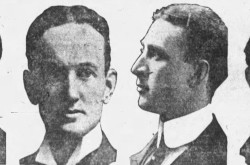
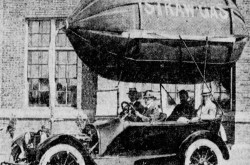

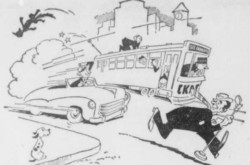

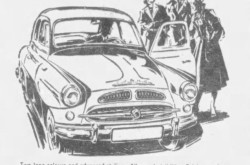
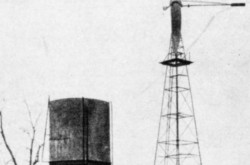
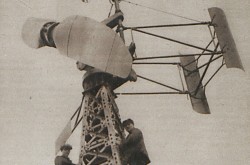
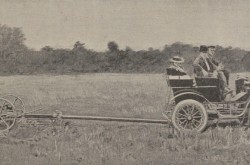

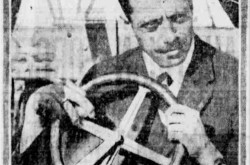

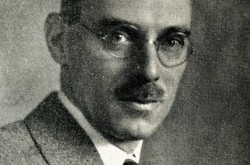
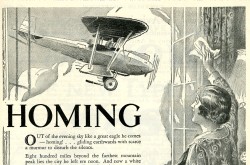

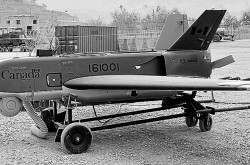


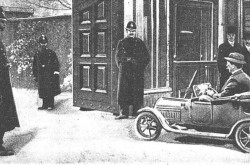
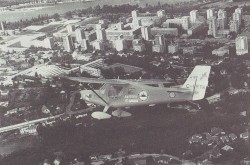
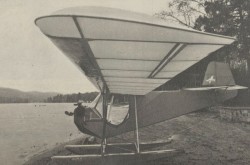
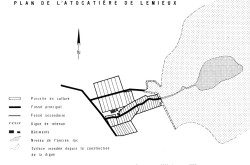

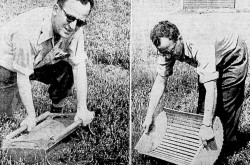
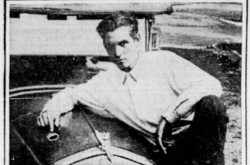
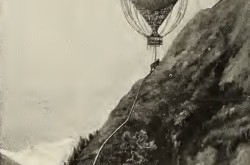


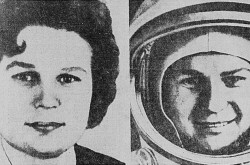
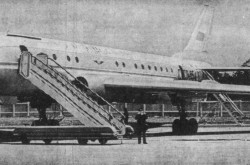
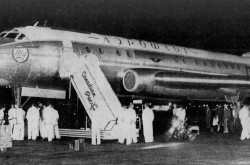
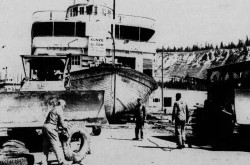
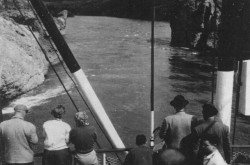
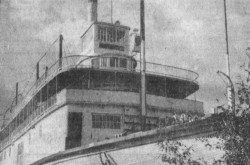

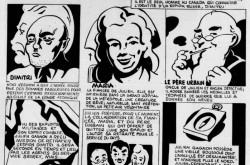
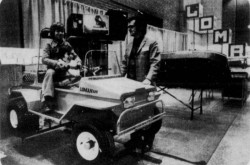

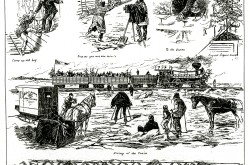
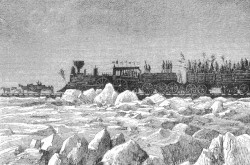
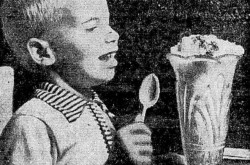
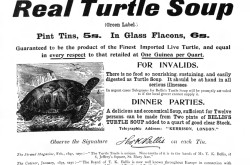


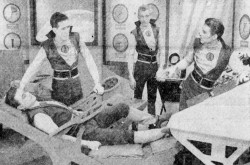

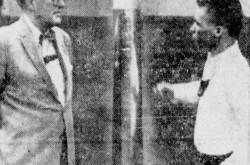

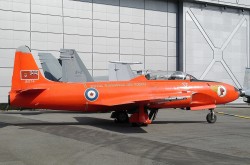
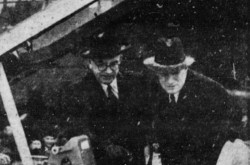
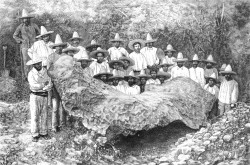
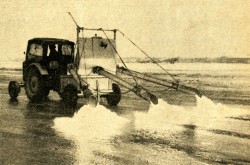

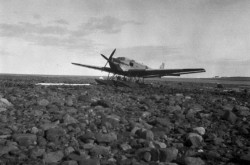

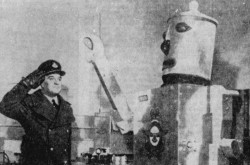
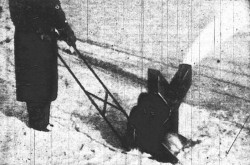


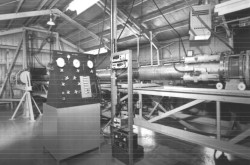

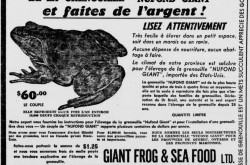
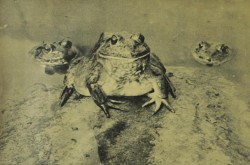

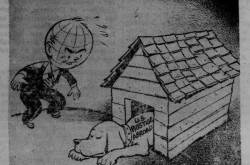
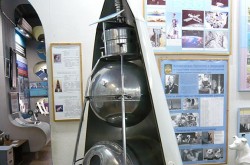



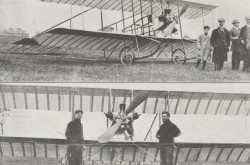


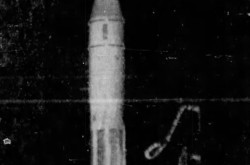
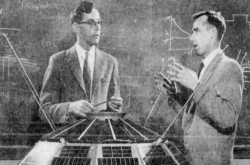
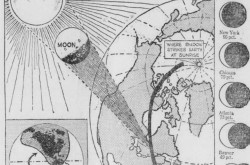

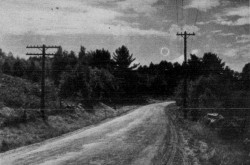
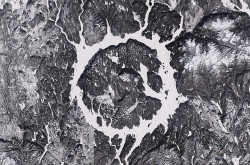




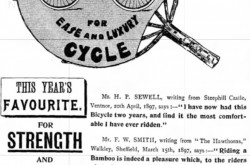
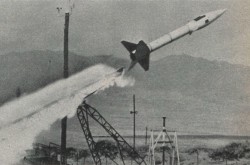
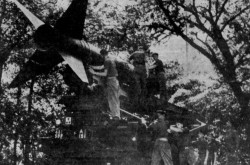

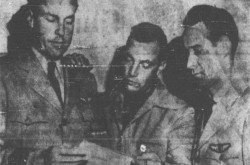
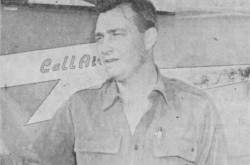
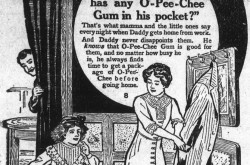

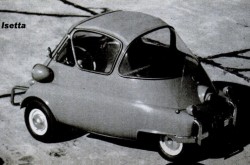
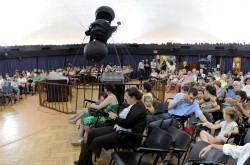
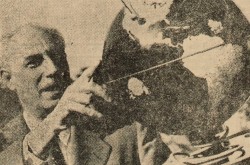





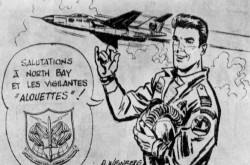
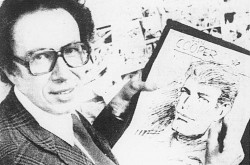
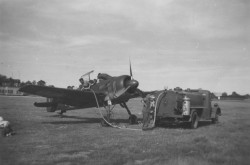

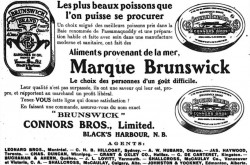
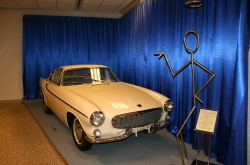

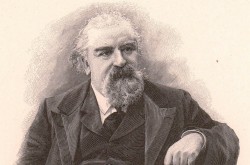


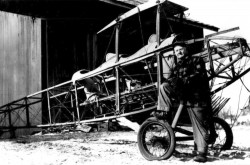

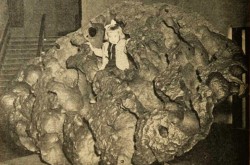
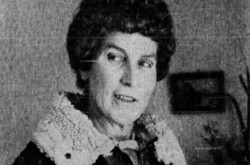

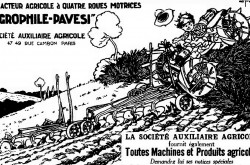
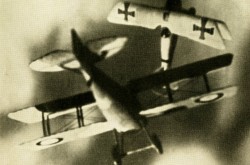

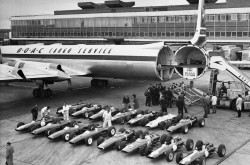
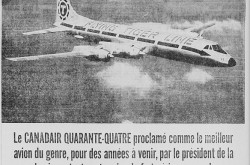


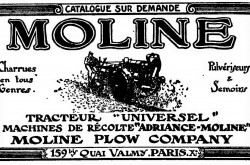

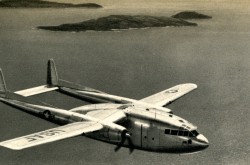
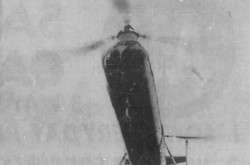

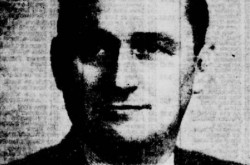
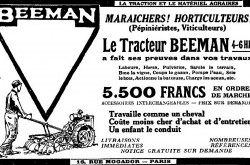
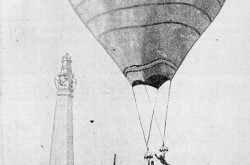

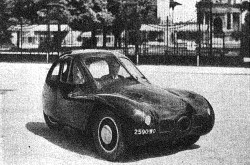
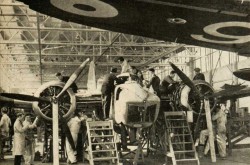


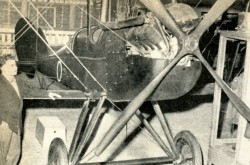
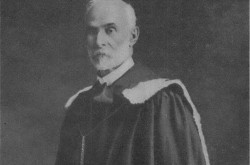
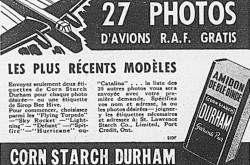
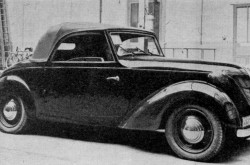

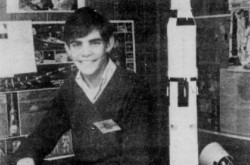

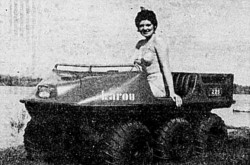
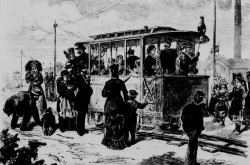
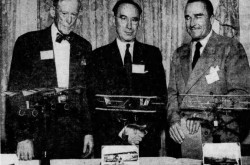




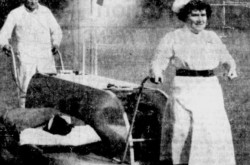

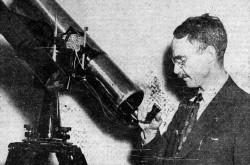

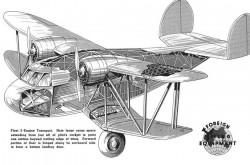
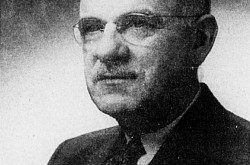
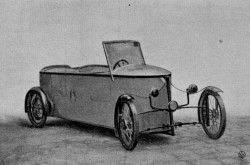

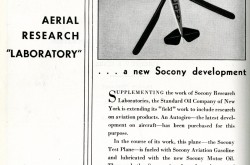

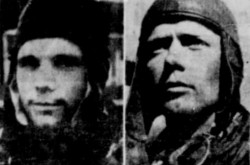


![Peter Müller at the controls [sic] of the Pedroplan, Berlin, Germany, March 1931. Anon., “Cologne contre Marseille – Le mystère du ‘Pédroplan.’ [sic]” Les Ailes, 2 April 1931, 14.](/sites/default/files/styles/thumbnail_7/public/2021-04/Les%20Ailes%202%20avril%201931%20version%20big.jpg?h=eafd0ed4&itok=WnBZ5gMf)
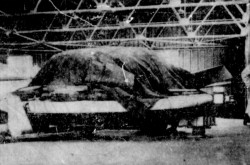
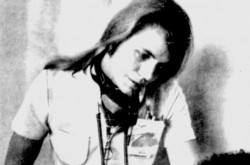
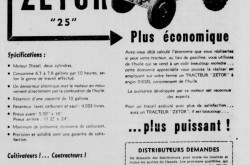
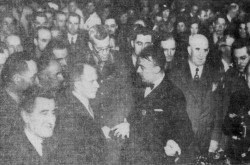
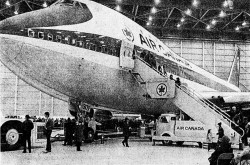
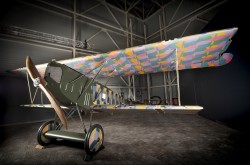

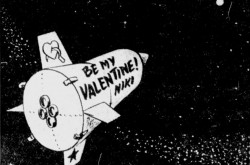
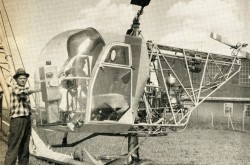


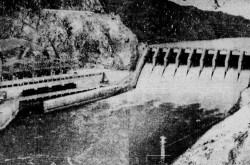
![One of the first de Havilland Canada Chipmunk imported to the United Kingdom. Anon., “De Havilland [Canada] DHC-1 ‘Chipmunk.’” Aviation Magazine, 1 January 1951, cover.](/sites/default/files/styles/thumbnail_7/public/2021-01/Aviation%20magazine%201er%20janvier%201951%20version%202.jpg?h=2f876e0f&itok=DM4JHe5C)
